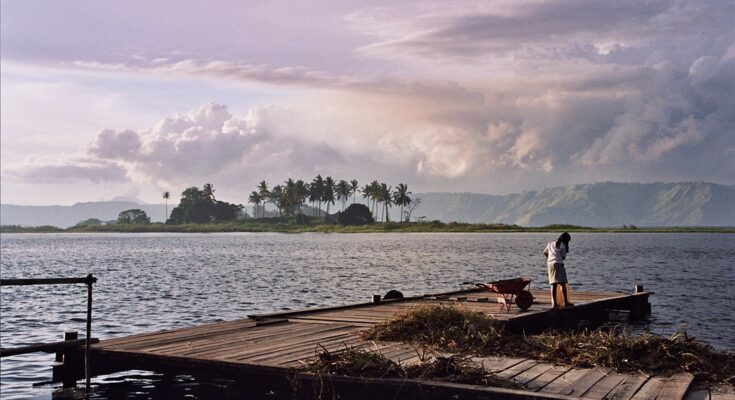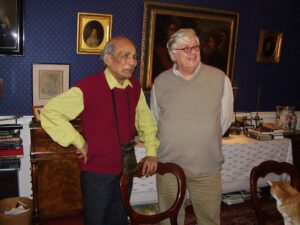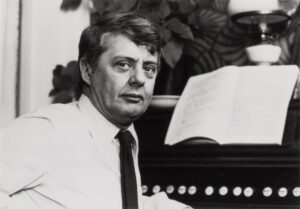by Dirk A. Buiskool
Photo Barbara Brouwer, Marc Vervaart
After a stay of more than 30 years on Sumatra, I became attached to the country. In 1990 I came to Medan as a teacher of European history, the students were curious about the European story and I about that of Sumatra. I have had endless conversations with the Batak from the highlands, with the Malays from the coastal regions, Minangkabau from West Sumatra, with Javanese and ethnic Chinese Indonesians. In addition, I met countless Dutch people who were looking for the places of their youth, their parents or grandparents. The Indonesians look ahead, to the future, how to rebuild the country, many Dutch came here precisely because of the history with their nostalgic memories.
Few knew how to describe the atmosphere as well as Rudy Kousbroek and Sitor Situmorang, a Dutchman and an Indonesian. Two writers, of the same generation, both from Sumatra. One born in the village of Harianboho near Lake Toba, the other in Pematang Siantar. They were born in Indonesia and knew the country and the culture from childhood, they wrote their story “from the inside out”, as it were, which gave their description even more depth. In their youth they never met, in later years they became friends, it was remarkable how much appreciation they had for each other. Kousbroek wrote rave reviews about Situmorang’s oeuvre and the latter dedicated a poem to Rudy Kousbroek for his 70th birthday. Now they have both passed away, Rudy Kousbroek in 2010 and Sitor Situmorang in 2014. But they live on in their work.
Rudy Kousbroek (1929-2010) spent his youth on the plantation Poeloe Radja near Kisaran on the east coast of Sumatra where his father was a planter. During his school days he attended boarding schools in Pematang Siantar and Brastagi until the Japanese invasion. Kousbroek distinguished himself in his essays by his “rational passion”, professional and passionate at the same time. For Rudy Kousbroek it was not so much about purely intellectual analyzes but mainly about the feeling he got when he read or heard something. Such as reading Harm Kamerlingh Onnes’s 1923 letters about Sumatra. Kousbroek: sometimes when I read these letters I hear my father’s voice.
He experienced the Japanese occupation with the internment in the first camp Soengei Senkol near Medan as a liberation from the boarding school in Brastagi, where he had felt most unhappy. In the camp he was reunited with his father whom he loved so much. In the second camp Sirengorengo near Rantau Prapat his father almost died of dysentery, he barely survived the camp. In 1945 the Kousbroek family repatriated and in 1946 they move to Amsterdam. Here Rudy finished high school and then studied mathematics for some time before leaving for Paris. In Paris he continued his studies (Chinese, Japanese) and came into contact with the painters of Cobra and young writers such as Simon Vinkenoog, Hugo Claus and Remco Campert. With Campert, whom he already knew from high school, he founded the magazine Braak in 1950 and was thus at the cradle of the Movement of Fifty.
Rudy Kousbroek wrote about a wide variety of subjects, from literature, junkyards, animals, old photos, eroticism, mathematics, visual arts, cultural philosophy to Chinese politics, but especially about his youth in the former Dutch East Indies. With his clear, ironic, humorous essays, he became the face of the Cultural Supplement of NRC Handelsblad. Much of his work first appeared in the newspaper and was later bundled in titles such as De cuddly factor, Morgen we play on and De cheerful despair. In 1992, Het Oost-Indischkampsyndroom (The East Indies Camp Syndrome) was published, his most famous book, a collection of intellectual and at the same time highly sensory essays with memories, associations and feelings related to his childhood in his country of origin. He became one of the most famous critics of the colonial past, especially from the milieu of old colonials, this was not appreciated. In 1975 Kousbroek was awarded the P.C. Hooft Prize and in 1994 he received an honorary doctorate in philosophy from the University of Groningen as “the most prominent representative of the essayist tradition in the Netherlands from the 1970s”. In 1980 the series of articles Back to Negri Panerkoms appeared in NRC Handelsblad, which he wrote during a trip through North Sumatra in which he visited the places from his youth. On the basis of this series of articles, the RVU educational broadcaster made the documentary The lake of remembrance in 1994, for which Kousbroek traveled to Sumatra again and was interviewed on the spot about his childhood in the former Dutch East Indies. In the last years of his life, Kousbroek published three books with essays based on photography under the title Photosynthesis. Just like Sitor Situmorang, Rudy Kousbroek cherished his childhood memories:
It is already getting dark in the garden, but the flying dogs, passing high in the sky, still catch light. This is not a dream or fantasy setting; it is real, or at least it was once, it has existed, even beyond my memory. Where? Obviously, there is only one place in the world where such a scene could have taken place: Indonesia. Such miracles are daily work in that archipelago. Flying dogs. Insects that roar like airplanes. Kale on pillars as high as church towers. A waterfall, a sulfur lake, warm rains that fall thunderously, without warning, the drops so big that there is no space in between – and then suddenly stop again … Darkness that spreads as if someone were pouring out Indian ink (the name says it all) about a watercolor. Nights full of demonic noise, with flies flying through the air burning. Smoking mountains. A roof full of monkeys. Mornings fresh and quiet like the birth of the world, pink and mother of pearl … Life in paradise, the childhood memories.
The blue mountains of the Bukit Barisan
It was in Paris where Rudy Kousbroek met Sitor Situmorang and where the latter gave him some poems. A poem that made a big impression on Kousbroek was called “Message to a friend” and was in the collection To Love, to Wander. In it, Sitor Situmorang described his imprisonment during the Suharto regime. When he finally walks out of the prison gate after 11 years, the poem says:
I turned my eyes to the southern sky / Looking for the two peaks in the Preanger Mountains: / the Goenoeng Gedé / and the Goenoeng Salak / which I always knew when getting up / without fail / floating above / the vegetation and the clouds. / Eternal / forever / waiting / ready for the moment / that I would emerge from behind those high walls.
This was the moment of recognition for Rudy Kousbroek. When he walked out of the gate of the Si Rengo Rengo camp near Rantauprapat in August 1945 during the liberation of the Japanese, the first thing he saw was the blue mountains of the Bukit Barisan, which he looked out at every day, and thought: not anymore for life.
Kousbroek described the stories and poems of Sitor Situmorang as subtle, tender, longing, resigned, described with great purity. Then there were the personal factors, because the stories of Situmorang take place in the region of Lake Toba, in the Batak lands, where Kousbroek spent holidays as a child and a place he always remembered vividly. When Situmorang wrote about the lake, Kousbroek immediately saw Lake Toba again and when there was mention of ‘The thousand green hills”; The image of Seriboe Dolok (Thousand Hills), the name of the mountainous landscape near Lake Toba, came to his mind. For Kousbroek these were unforgettable stories and a highlight in Indonesian literature and, according to him, actually also Dutch heritage.
That the appreciation was mutual was evident from the poem about the volcano Sibayak, the volcano that Rudy Kousbroek watched for years from his boarding school in Brastagi. Sitor Situmorang dedicated this poem to Rudy Kousbroek in 2000.
Poem about the Sibayak volcano in the Karo country
By Sitor Situmorang
Gift for Rudy Kousbroek’s 70th birthday
Stones of memory / your top rises above the clouds
clothed in the light / from the first morning on earth /
childhood / primary school memories
in the highlands / of the Karoland /
The Sibayak volcano / defends / committed / unconsciously
saved as a monument / forever /
symbol of desire / for your whole life
memories in memories / too good to see /
too close to / in a row of volcanoes
transparent jewels / along the equator /
on the island of Sumatra.
The author is a Dutch writer who owns a hotel just outside Medan. Dirk A. Buiskool wrote for magazines like Archipel and Azië.













